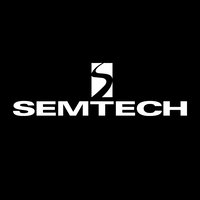Or listen in your favorite podcast app
Apple Podcasts / Google Podcasts / Spotify
Alistair Fulton has always considered himself a mechanic. After all, his job as the Vice President and General Manager of Semtech’s Wireless and Sensing Business is to utilize the tools provided to him in his toolbox and give customers the appropriate solution. The only difference is his toolkit helps millions of people across the world stay connected through a variety of different technologies. Fulton joins IT Visionaries to provide a referendum on the state of the IoT, and he discusses why the biggest challenges facing his community are themselves, and why LoRa (or Long-Range wireless solutions) and 5G are no longer seen as competitors, but allies.
Key Takeaways
- Handy Dandy Toolkit: One of the most common mistakes made collectively by the IoT community is that they don’t fully appreciate that each tool — or form of technology — is another part of the toolkit
- Tough Choice: One major issue surrounding IoT is the number of vendors that offer end-to-end solutions that don’t operate under a single ecosystem. According to Fulton, the IoT space is littered with failed use cases where companies can’t work together because the systems are not compatible.
- Same Team: There is a misconception that LoRa and 5G can’t work together, but in reality the two systems commonly work together to achieve different goals.
For a more in-depth look at this episode, check out the article below.
Alistair Fulton has always considered himself somewhat of a mechanic. No, not a mechanical engineer or a mechanic that operates on cars, but rather a mechanic in the sense that he can identify a problem, reach into his toolbox and select the instrument needed for the job. It’s this lens through which he operates under now, as the Vice President and General Manager of Semtech’s Wireless and Sensing Business. Fulton’s main responsibilities include providing the necessary tools to make sure companies, schools, and cities operate as efficiently as possible. Fulton joined IT Visionaries and dove into the DNA of IoT, the relationship between 5G and LoRa and why one city is ahead of the curve.
Fulton remembers being young and fascinated by the capabilities technology possessed and how it could fundamentally change the way humans lived. At the time, Fulton just didn’t know he’d make a career of working in the space.
“I generally don’t think a career is a plan,” Fulton said.I was much more fortunate to have a series of exciting challenges that came my way.”
One of those challenges is deploying LoRa, which is short for long range. LoRa is a low power wireless platform that has quickly become the go to technology for the Internet of Things networks worldwide. According to Fulton, LoRa is helping to solve some of the biggest challenges facing the planet, including energy management, natural resources, infrastructure efficiency, and more. As the product has developed, it has become the main focal point for Fulton and Semtech.
“By providing a set of tools that people building IoT applications can use, that means not having to rely upon deep embedded hardware development skills, but that you can approach this from the perspective of a cloud developer and actually utilize this technology in your solution. We are lucky enough to be part of a broader ecosystem around LoRaWAN, which is the data protocol that runs on top of LoRa the physical layer. LoRaWAN is managed by the LoRa Alliance, an open and nonprofit association, that we obviously spend a lot of time collaborating with and supporting to enable a broader ecosystem of folks building networks using LoRa and solutions using LoRa,” Fulton said.
There are three main components that operate in unison to make up LoRa. Those key things are hardware, the software, and the services that make the development process more efficient. And while LoRa operates amongst a network, similar to 5G, Fulton was quick to point out that the two are not competitors, but allies.
“I look at this world of IoT and I see the need for a variety of different tools,” he said. “If you look at any comprehensive IoT solution, they’re essentially targeting the same set of problems. You’ve got a variety of different needs.”
In that same vein, Fulton pointed out that 5G requires high bandwidth and a high dependency on the ability to react in real time to situations, whereas LoRa does not focus on one single area, but rather excels in numerous avenues while complimenting other technologies.
“The comparison between LoRa and other technologies is LoRa does a specific set of things really well, but it’s a compliment to other technologies that are used,” he said. “I actually think one of the mistakes that we [have made] collectively as an IoT system is not to fully appreciate the implications of that. We do not fully appreciate that these tools are part of the toolkit and they must work together in order to do what developers — and ultimately the customers of those developers— want and need.”
While 5G technology has been slow to be implemented across the globe, LoRa is readily available in markets across the world and has been since 2016. One of those is the city of Calgary, where Semtech worked alongside city developers to provide infrastructure with the internal city business units, civic parents and the broader community to become the first North American city to deploy LoRaWAN-based networks.
“What Calgary did was lay down network infrastructure that was then used to support a variety of different use cases,” Fulton said. “Those use cases range from things like trash collection, the maintenance of the physical environment, and monitoring and understanding the nature of that physical environment. If you can understand what’s happening well enough and tailor your reaction, you save an enormous amount of costs.”
One of those cost-saving measures centers on environmental concerns around the consumption of resources such as water and energy. But in order to take those measures, Fulton said it’s a role that cities such as Calgary and Los Angeles, are beginning to take seriously when it comes to its residents that live within city limits and tourists who visit and spend money within the city.
“If you’re a city manager, if you can’t see it, you can’t be it,” Fulton said.“And if you can’t look at someone else solving a set of problems with a set of technologies and you can’t observe those technologies working together and being easy to support, that’s a very quick way of understanding whether or not something’s real. We tend to shine a spotlight on cities like Calgary just to say here’s an example of how someone did this, how they solved the problem.”
While technology advancement and implementation continue to be struggles facing every city, one of the biggest challenges facing the IoT is the number of options available to companies operating in the same space, but not working with one another.
“The sheer cacophony of alternate solutions [ is the problem],” Fulton said. “There’s a lot of stuff out there that’s not as close to production as it might be. It’s phenomenally difficult to have confidence that you’re making the right set of choices. If you add to that somewhat cynical and somewhat deliberate attempt to design independency, you see a lot of solutions, and it becomes a very difficult decision for anyone to make.
Fulton added from there that the struggle in IoT very often is how much cost the company is going to accrue and how much of the money being spent will impact people’s lives.
“The path of IOT is littered with failed projects,” Fulton said. “The technology is the easy part. You can come up with a technical solution to a problem. The difficulty is understanding that problem and being able to translate understanding of that problem into a solution.”
So what is the current state of LoRa and where is it going? According to Fulton, while many municipalities have already begun to implement the technology around the world, they still remain in the early phases of what the technology can do.
“In many ways we are just in the very beginning of where LoRa can go,” he said. “Which might sound odd considering how quickly the ecosystem around LoRa has grown. LoRa has only been available for five years or so and the ecosystem is 500-plus companies. …. There is a great deal of energy around the technology.”




